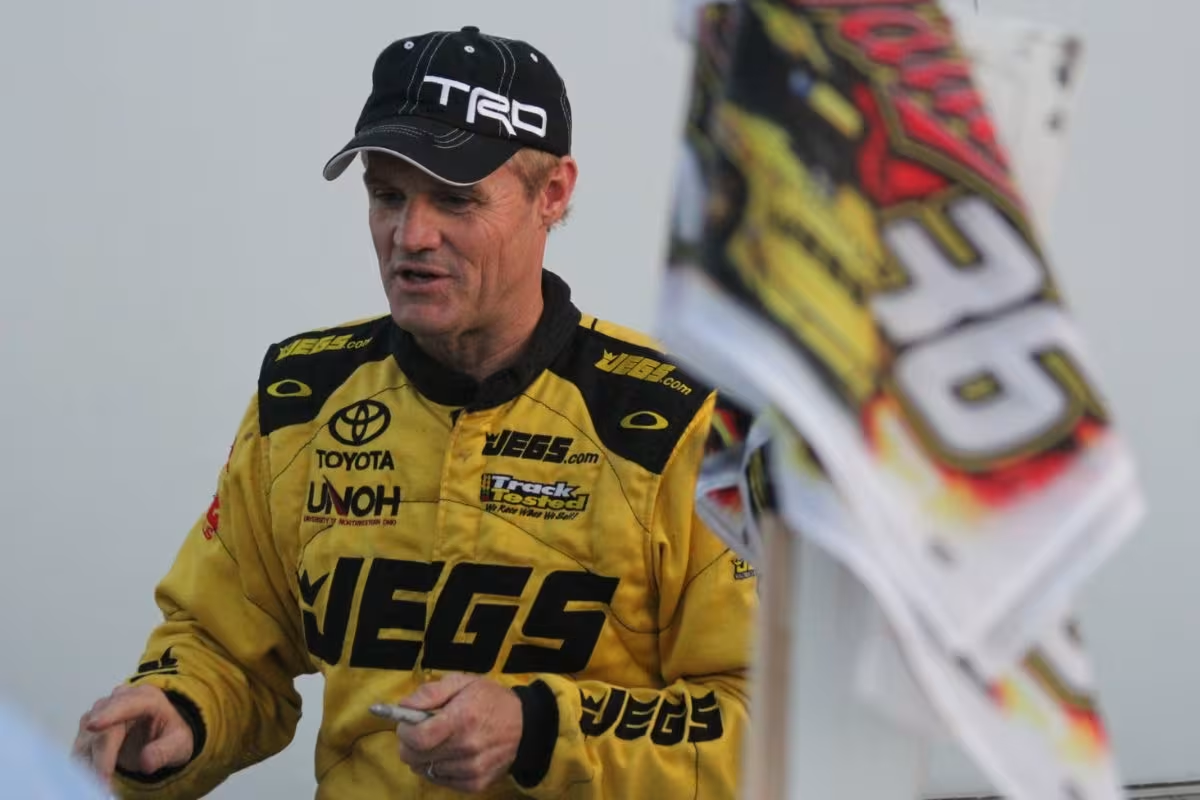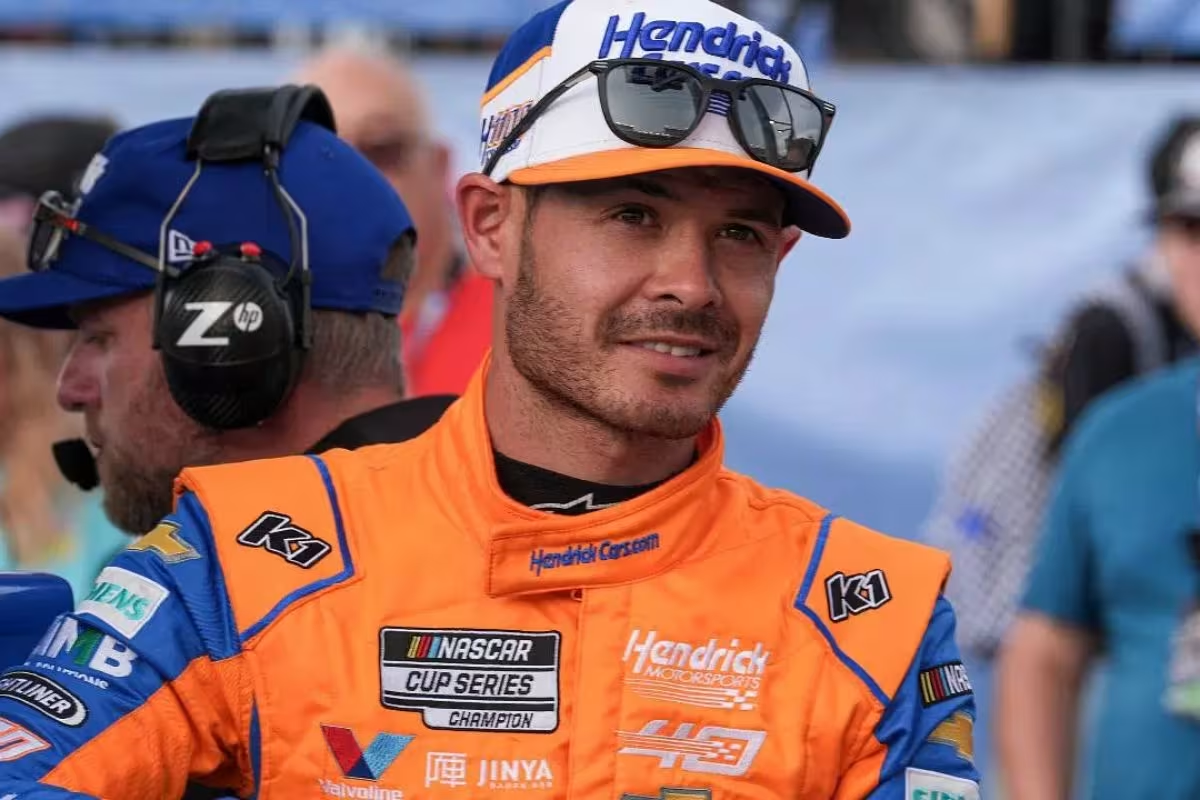Kenny Wallace Slams Critics of Kyle Larson: In a recent episode, Kenny Wallace has taken a stand against the wave of criticism directed at Kyle Larson following the Bristol race, arguing that the response reveals a disconcerting shift in sports culture. Wallace’s comments invite a deeper examination of how fan expectations and reactions can overshadow an athlete’s achievements, particularly in a sport as complex as NASCAR. As he champions Larson’s impressive performance, it raises the question of whether the focus on negativity is undermining the very essence of competitive sports. What implications does this have for athletes and their mental well-being?
Key Highlights
- Kenny Wallace defends Kyle Larson, arguing that the backlash against him is excessive and unwarranted following his impressive Bristol race performance.
- Wallace emphasizes that negativity in sports culture often overshadows skillful performances, urging fans to appreciate excellence instead of tearing it down.
- He criticizes fans for preferring dissent over celebration, noting that Larson’s significant victory margin should be respected rather than criticized.
- Wallace also points out that issues with race quality stem from broader NASCAR structural changes, not solely from individual drivers like Larson.
- His remarks highlight a need for a cultural shift in how fans engage with the sport, focusing on support rather than negativity.
Kenny Wallace Addresses Negativity After Bristol Race
Addressing the wave of criticism that followed the Bristol race, Kenny Wallace emphasized the pervasive nature of negativity in sports culture. His remarks shows an unsettling trend: the propensity for fans to gravitate toward dissent rather than celebration. “Negativity sells—people like negativity,” Wallace asserted, tells a phenomenon that transcends NASCAR and permeates diverse sporting areas.
“Negativity sells—people like negativity,”-(KENNY WALLACE)
The Bristol race, a highly anticipated event, promised to deliver the excitement reminiscent of its Spring counterpart. However, the outcome—dominated by Kyle Larson, who swept all stages—left many fans disappointed. The failure of Goodyear’s tire strategy, intended to improve the race’s competitiveness, became a focal point of critique, igniting a firestorm of disparagement on social media platforms. This backlash is indicative of a deeper issue: the struggle to appreciate skillful performances amidst a landscape where grievances are amplified.
Wallace’s commentary invites a critical examination of the relationship between performance and public perception. While Larson’s victory should be a reflection of his skill and tactical insight, the relentless negativity dampens the celebratory spirit that should accompany such achievements.
This dichotomy raises questions about the role of fans in shaping the narrative of sports. Are they mere spectators, or do they actively influence the atmosphere surrounding competitive events? Ultimately, Wallace’s insights challenge fans to reconsider their engagement with the sport, advocating for a culture that champions excellence rather than tearing it down.
Kyle Larson Gains Support from Kenny Wallace
Kenny Wallace has emerged as a vocal advocate for Kyle Larson amidst the swirling criticism following the Bristol race. Larson’s dominant victory, marked by a staggering 7.088-moment margin, has ignited debates regarding the quality of racing at Bristol Motor Speedway. Fans expressed their dissatisfaction, with 27.7% favoring the previous spring race, which featured 54 lead changes and tire issues. In clear contrast, the fall race saw a mere eight lead changes, leading to discontent among the audience.
“I don’t have the answer to fix what we currently have and neither do you but please stop blaming Goodyear. It’s not a tire problem.”-(larson)
Wallace has taken a stand, emphasizing the need to view Larson’s performance through a lens of respect and understanding rather than criticism. He articulated a broader perspective on racing dynamics, suggesting that the issue extends beyond tire performance and into the domain of competition and strategy.
Larson’s response to the criticism, which included his assertion that the issue is not solely a tire problem, has resonated with Wallace. Together, they represent a call for a more nuanced understanding of racing challenges, urging fans and critics alike to engage in constructive dialogue rather than resorting to blame.
Larson and Wallace Defend Goodyear Amid Fan Criticism
As criticism mounts from fans regarding the quality of racing, both Kyle Larson and Kenny Wallace have stepped forward to defend Goodyear, emphasizing the complexities behind the current challenges in NASCAR. The discourse surrounding tire performance has become a focal point as fans express dissatisfaction with the perceived lack of excitement in races.
“I don’t have the answer to fix what we currently have and neither do you but please stop blaming Goodyear. It’s not a tire problem.” -(larson)
However, Larson and Wallace argue that the issues are multifaceted, rooted more in the structural changes to the sport than in Goodyear’s tire technology.
Wallace, in a passionate rebuttal to critics, highlighted the societal shifts that have influenced fan expectations and perceptions over the past 15 years. He passionately stated that dismissing Larson’s insights indicates a broader disconnection within the fan base.
“When race fans start arguing with @KyleLarsonRacin here on X that he is wrong 😳IS WHEN PEOPLE HAVE LOST THEIR MINDS 🥴 We are and have been in a “changed society” (for the worse) over the last 15 years or so.”-(KENNY WALLACE)
When race fans start arguing with @KyleLarsonRacin here on X that he is wrong 😳
IS WHEN PEOPLE HAVE LOST THEIR MINDS 🥴
We are and have been in a “changed society” (for the worse) over the last 15 years or so. pic.twitter.com/05JtQklbCs
— Kenny Wallace (@Kenny_Wallace) September 24, 2024
Larson’s skill as a driver is undeniable, yet the constraints imposed by the Next Gen car—specifically the reduced horsepower and standardized parts—have limited drivers’ ability to showcase their individual talents and creativity. This has led to a homogenization of racing, where the thrilling variability NASCAR is known for has diminished.
Goodyear, for its part, has been working hard to adapt to these changes while maintaining tire performance that meets the evolving demands of the cars. The narrative that places blame solely on tire quality overlooks the critical context of car design and driver adaptability.
Cup Drivers and Officials Acknowledge the Real Problem
In recent discussions surrounding the challenges faced in NASCAR, it has become increasingly clear that both Cup drivers and officials are grappling with the underlying issues affecting race quality. The ongoing conversation has highlighted a disconnect between expectations and actual racing dynamics, particularly at short tracks like Bristol. Drivers, such as Kyle Larson, have urged fans to temper their expectations, emphasizing the limitations posed by driving spec race cars, while officials admit to feeling “baffled” by the recurring inconsistencies in race outcomes.
“Temper your expectations. We’re driving spec race cars.”-(LARSON)
The complexity of this situation is further emphasized by the struggles of NASCAR officials to replicate successful race conditions consistently. Elton Sawyer, NASCAR’s senior VP of competition, expressed the organization’s frustration in trying to strike the right balance between competitive racing and tire management.
“We felt like that we had a recipe there from the spring that gave us what we’re looking for in our short track racing, putting kind of the tire management back in the driver’s hands.”-(Elton Sawyer)
As NASCAR navigates these multifaceted issues, it is essential to recognize that both drivers and officials are committed to enhancing the racing experience. However, achieving this goal requires a candid acknowledgment of the inherent limitations present in the current framework. The dialogue must continue if the sport is to evolve and meet the expectations of its passionate fanbase.
Denny Hamlin’s Take on the Next Gen Car’s Flaws
The ongoing debate surrounding the Next Gen car has intensified, with Denny Hamlin emerging as a vocal critic of its design flaws. As a seasoned driver and team owner, Hamlin’s insights bring a nuanced perspective to the conversation. He unequivocally identifies the issues as fundamentally rooted in the car’s engineering, stating, “It is a car problem.” This assertion reflects a broader sentiment among drivers who have faced increasing challenges on the track.
Hamlin points out that NASCAR’s attempts to address these issues by modifying tire compounds are merely cosmetic solutions. “We are trying to fix it with tires, because that’s the most economical way for us to fix it,” he explains. This approach, while cost-effective, may not resolve the underlying mechanical shortcomings that hinder competitive racing.
“We are trying to fix it with tires, because that’s the most economical way for us to fix it. Me as a car owner, I don’t want to buy any more parts or pieces for this Next Gen car. We already have a tough enough time keeping up with all the changes.”-(HAMLIN)
Hamlin’s frustration is palpable; as a car owner, he expresses concern over the relentless changes to the Next Gen car, indicating that the financial burden of continual updates is unsustainable.
The implications of Hamlin’s critique extend beyond individual frustrations. If NASCAR does not proactively address the inadequacies of the Next Gen car, it risks repeating past disappointments, particularly in venues like Bristol, where overtaking has become increasingly difficult.
The future of competitive racing hinges on a collaborative effort to refine the vehicle’s design while balancing the economic realities faced by teams. Without such measures, the sport may find itself at a crossroads, where mechanical deficiencies overshadow the talent of its drivers.
News in Brief: Kenny Wallace Slams Critics of Kyle Larson
ALSO READ: Kenny Wallace Calls Out Negative NASCAR Fans: “Why Do You Watch?”



